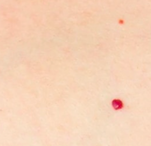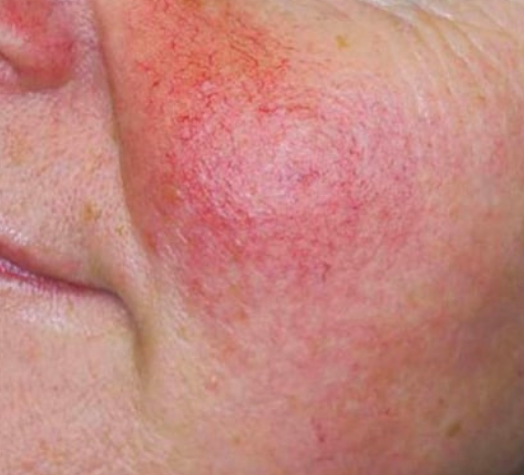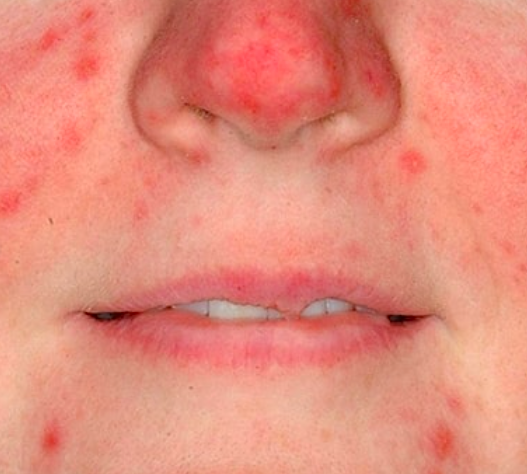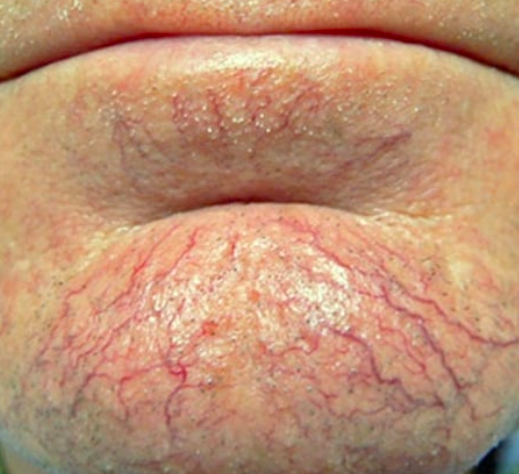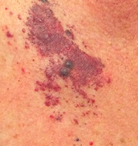|
Permanently reduce unwanted hair with a treatment personalized to your specific skin type.
Who can get laser hair removal? Men and women alike. A brief consultation prior to your first appointment is mandatory to assess the skin and talk about your medical history. Laser hair removal is not recommended during pregnancy. How many treatments do I need? Best results are typically seen within 6 treatments, spaced 4-6weeks apart. Some clients with fine, light or darker skin types may require more. What does it feel like? The laser tip is chilled to 3-5 degrees for your comfort. The initial 'snap' feels like a small elastic band being snapped on the skin. The treatment is fairly quick, depending on the size of the area being treated. Average treatment times are 5-20 minutes long. What to expect post treatment? There may be minor irritation, similar to that of a slight sunburn. These treatments are designed to have no downtime. How much does it cost? Treatments are divided in to sizes, small, medium and large. Prices vary between $60-$300. During your consultation you will have a breakdown of each area and the cost. This month we have LHR on promotion, buy 4 get 2 free or purchase 1 large area package and receive a small area free. Interested in pricing? DM us for more! - P: 📞 226-545-1115 E: 💌 brookelynn@whitewillowspa.ca W: 💻 whitewillowspa.ca
0 Comments
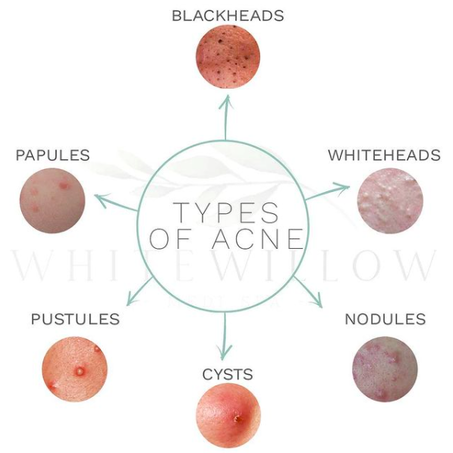 Diagnosing what type of acne you have can help a lot with what type of treatment options are best for your skin. There are 6 main types of acne: 1) Comedones are small skin coloured bumps on the skin, which are either open or closed. If they're open, the bacteria begins to oxidize and you get a blackhead. They're best treated with Salicylic Acid. If they're 'closed' at the surface of the skin, you get a whitehead. These can be treated with glycolic acid. 2) Nodules are hard pimples embedded deep under the skin. 3) Cysts are a painful infection which creates a red inflamed bump under the skin filled with pus. A combination of AHA's, BHA's and hyaluronic acid can help. If they're reoccurring, try eliminating inflammation causing foods and increase your Omegas. 4) Pustules are typically red at the base of the skin, with a yellow or white tip. Again treated with AHA's, Tea Tree or Lactic Acid peels can help. 5) Papules are tender to touch and are bright red or pink. Niacinamide is a good treatment for these or the Activated Charcoal HydroJelly Mask. If you need help diagnosing 🙋 hi, I'm here to help. - P: 📞 226-545-1115 E: 💌 brookelynn@whitewillowspa.ca W: 💻 whitewillowspa.ca If you were watching my stories yesterday, I had a poll of how many people knew what PRP is. I found out that 67% of pollers didn't know what PRP was. So here we are.
Platlet Rich Plasma, aka PRP, is a concentrate of platelet-rich plasma derived from whole blood, put into a centrifuge to remove red blood cells and then injected back into the desired area. This therapy is considered to be a regenerative form of medicine as it expedites the natural growth and healing factors of your body. And, because it's your own blood, there's very little to no side effects. So what can it be used for? Initially, PRP was used to treat tendons, muscles, joints and ligaments. Modern cosmetic treatments have discovered that the use of PRP was widespread and be used to accelerate healing, repair skin tissue, and collagen and elastin production, thus the 'vampire facial' was born. Other cosmetic uses for PRP include hair restoration and a substitute for dermal fillers. 💉Popularized by celebrity, Kim K, Vampire Facials are essentially microneedling treatments with the PRP applied topically (or injected back into the skin). 💉Similar to microneedling, patients seeking hair restoration will have their blood drawn, put in a centrifuge, and PRP injected back into the scalp. 💉PRP provides a substitute for dermal fillers. They're often used to correct crepey skin near the eyes, lips and cheeks. It can also be used on the back of the hands, scars and stretch marks. I have also had clients use PRP to add volume to their lips. The results Results are seen in just a single treatment. For optimal results, 3 treatments over the course of 4 weeks are recommended. After the plasma is absorbed, results last 18-24 months. At White Willow, we offer both Vampire Facials and Hair Restoration. After a brief consultation with our skilled nurse injector, she will review your medical history, medications, objectives and budget to decide whether or not PRP is the right choice for you. Is PRP something you would consider? - P: 📞 226-545-1115 E: 💌 brookelynn@whitewillowspa.ca W: 💻 whitewillowspa.ca *photos are not mine* A common mistake made with first time clients is that they don't clearly know the difference (I once had a lady ask for Botox in her lips to add volume). An honest mistake.
It's true, both can be used to treat wrinkles on the face, and each is delivered via injection, they're slightly different in usage. Botox (or neurotoxin) is a muscle relaxer made of bacteria. Toxins have been used for decades to treat everything from neurological disorders to wrinkles on our face and even migraines and excessive sweating. It's cosmetic use is to relax muscles that have become more pronounced with age and reduce the appearance of wrinkles and expression lines. Dermal fillers on the other hand may treat wrinkles on the face, but instead of preventing movement, they simply 'fill in' resting lines of expression. Your provider may use one or the other, or a combination of both to give you your best result, which is why a consultation and a reputable injector is crucial. Anyone can inject a product, it takes a skilled artist to contour your face. Both have risks which will be addressed during your visit. Make sure to always keep your provider up to date on your current health status and what medications you're on. Always always look into your injector, meet with them and check out their work. And please please please don't purchase Groupon injections 🤦 - P: 📞 226-545-1115 E: 💌 brookelynn@whitewillowspa.ca W: 💻 whitewillowspa.ca You wake up one morning and see you've got yourself a red, spidery-looking splotch on your face that came out of no where. Congrats, welcome to your first broken blood vessel (a broken capillary).
No cause for alarm, broken capillaries are very common and can be found on the face and legs. Environmental factors such as sun exposure, alcohol consumption, weather changes and pregnancy can contribute to them showing up. Unfortunately genetics are the biggest contributing factor as they’re more common in anyone with sensitive skin types, acne, or rosacea. Winter is especially bad, due to fluctuating hot-and-cold temps. The good news is, with the right treatment and proactive skincare, they're treatable and permanently go away. You'll need to invest in a photofacial (IPL treatment) and follow up with at home skincare. IPL treatments can help aliviate the following vascular skin conditions: -Port wine stain -Broken capillaries -Telangiectases -Rosacea -Cherry angiomas Being proactive is the best way to prevent the pesky veins, and luckily by shifting your routine at home can help keep them at bay. Some at home remedies include: -Ditching the hot water, use lukewarm or cool water on your face -Don't pick or pop -Exfoliating with a gentle exfoliant -Using Vitamin C -Apply SPF year round Swipe to see the following treatable vascular skin conditions. All which can drastically be improved with IPL. Do you suffer broken capillaries or rosacea? We'd love to hear from you! - P: 📞 226-545-1115 E: 💌 brookelynn@whitewillowspa.ca W: 💻 whitewillowspa.ca I've mentioned it before, IPL is my favourite treatment to perform. But what is it exactly? IPL, intense pulsed light also known as photofacials or photo rejuvenation, has the ability to penetrate skin with minimal damage. Using wavelengths of light, IPL focuses on specific skin colours to treat different conditions. (Swipe to see 👀) IPL treatments have been know to -tighten and minimize the appearance of pores -reduce the severity of acne & control sebum -reduce the appearance of sun spots and freckles & hyperpigmentation -treat skin redness & vascular lesions (broken capillaries, blood vessels, telangiectasia, rosacea) -reduce the appearance of scars -reduce the appearance of fine lines and wrinkles -improve facial contour & tighten skin -boost collagen and elastin production With no downtime and minimal discomfort, results can be seen in just one treatment. As many as 6 may be needed depending on the severity of the skin condition being treated. If you're considering an IPL treatment, book a complimentary skin consultation where we can assess your skin and talk about how to achieve your goals. - P: 📞 226-545-1115 E: 💌 brookelynn@whitewillowspa.ca W: 💻 whitewillowspa.ca Did you know it's recommended to do some cosmetic treatments seasonally?
But why is that? Simply because the suns rays are not as strong and you're typically protected by more clothing. We've listed the top 4 treatments best performed in fall and winter months to achieve your best glow before spring. #1 Chemical Peels It's no secret that fall is considered 'peel' season. Superficial peels can be done at any time of year, but if your focus is pigment and uneven skin tone, it's best to wait until fall when you're exposed to less sunlight. Some peels make you more sensitive to sun exposure and can actually darken pigment if you're not careful. #2 IPL Facials I LOVE photofacials. IPL focuses on pigment (browns) and rosacea/redness. Treatments are typically done 3-4 weeks apart in a series of 3. Doing them over the cooler months is recommended because, similar to chemical peels, when treating pigment issues you can darken melasma if you're not careful. Also, rosacea is worsened with sun exposure. #3 Laser Hair Removal LHR works by targeting the pigmented hair follicle to reduce or eliminate hair growth. Treatments are done 4-8 weeks apart, with an average of 6-8 treatments. The best results are seen on pale, untanned skin to increase the contrast between skin colour and hair follicle. #4 Skin Lightening Products Lightening agents work wonders, but they can make your skin photosensitive. Using products like hydroquinone can have great results, but if used in the summer can lead to rashes, burns or darkening of the skin. Always remember to apply your SPF on top of your lightening products, whether it's summer or winter. White Willow is excited to now offer all the mentioned services in this post (and more)! The month of November will be focused on pigment and hair removal so make sure to DM us with your email to be the first to receive our monthly promos. Curious to see if you're a candidate? Consults are always free and include a mini facial to assess the skin. Your skin is unique to you so should be your treatment plan. We are honoured to be on this journey with you. - P: 📞 226-545-1115 E: 💌 brookelynn@whitewillowspa.ca W: 💻 whitewillowspa.ca As we navigate this new norm of mask wearing, reoccurring questions about breakouts, irritation and dry skin are becoming more and more common during consultations.
Let's break it down. Simply put, wearing a masks traps your oil, sweat, makeup and breath, the moisture creates a damp and sweaty environment that breeds bacteria and irritation. Wearing a mask for hours can lead to bruising and even rashes. Some tips to keep your skin healthy and happy: 1) Wash your face immediately after taking off your mask. If you're not home to do a full wash, keep an unscented baby wipe in your purse. Give yourself a wipe immediately after you remove your mask, but make sure to followup with proper cleansing when you get home. 2) Avoid wearing makeup. The mask likely rubs the makeup off anyway, which can cause oil build up and blocked pores. Shelf the makeup for now. 3) Use a barrier cream where your mask sits if your skin is dry or chafing (Lexxel is amazing for this). Hydrocortisone 1% can help with itching and rashes. 4) Curb using strong products and avoid using aggressive exfoliants. Treat breakouts with a spot treatment like salicylic acid or benzoyl peroxide. 5) Treat your skin with TLC. Nourish it when your home. If you haven't started a solid skincare routine, consider starting one. Or, maybe your routine needs a little bit of temporary tweaking. *Bonus* add an Omega supplement to your regimen to fight inflammation and keep your skin hydrated. If irritation persists or symptoms worsen, it may be time to have a quick chat with your doctor to rule out any bacterial or fungal infections. - P: 📞 226-545-1115 E: 💌 brookelynn@whitewillowspa.ca W: 💻 whitewillowspa.ca Hyperpigmentation is the result of excess melanin being produced, this forms deposits in the skin and gives off the appearance of a freckle or brown spot. (Swipe to see ➡️)
There are three main types of hyperpigmentation; UV induced, post inflammatory and hormonal induced hyperpigmentation. Sun damage is the main cause of hyperpigmentation (hello SPF!). The brown spots can appear light or dark, and it typically shows up on areas of skin that are exposed to sunlight, like hands, chest, face and shoulders. Another cause of hyperpigmentation is post inflammatory hyperpigmentation, this is caused from injury or inflammation to the skin. Darker skin types are most prone to this type of pigmentation, but all skin types may experience it. Lastly, hormonally induced hyperpigmentation is often seen as melasma or pregnancy mask. These changes are typically seen on the face during pregnancy or other spikes in hormones. So, what can we do to treat it? 1) Exfoliation, I find chemical exfoliation to work best. As pigment appears to be darker at the surface of the skin, chemical exfoliants can be very useful in lifting pigment. Using a retinol product helps skin renew itself quicker, and bring healthier cells to the surface. This gives the appearance of lighter spots and a more even complexion. 2) Using a lightening product helps. Vivier makes a skin brightening cream as well as a Vitamin C Serum that aids in the lightening and evening out of your complexion. 3) Protect your skin from UV exposure. An SPF of at least 30 is required. Sunlight will worsen discolouration. Be diligent about reapplying. 4) Treatments. IPL Facials are a great way to help the uneven appearance as it uses wavelengths of light to target the darker pigment. Silkpeels coupled with chemical peels have also been proven to be effective in helping lighten and brighten the skin. Fall is the perfect time to combat skin discolouration, as you typically see less sun. For the month of October I will be focusing our treatments on skin clarity and tone. Stay tuned for some stellar before and afters! 🍁🍂 - P: 📞 226-545-1115 E: 💌 brookelynn@whitewillowspa.ca W: 💻 whitewillowspa.ca You may have heard of gut microbiome, but what is it exactly?
Simply put, a microbiome is a collection of living bacteria -good and bad. For your skin specifically, a microbiome is crucial part of making up your skin barrier, which includes the acid mantle and lipid barrier. Your skin barrier tends to be slightly acidic at a pH of around 5.0, this inhibits the growth of bacteria, fungus and other unwanted pathogens. Do you have a compromised microbiome? Clients with a weak or damaged microbiome often notice water loss, irritation, tightness after cleansing, dryness or flakiness, dermatitis, eczema and psoriasis. If you're noticing these symptoms take extra precautions against sun damage, harsh winds or even air from the blow dryer. Take a break from harsh products or treatments and review your products with a qualified esthetician to ensure you're using the right thing for your skin. How do we take care of it? Have you ever thought bad bacteria is actually good for you? With maintaining a healthy microbiome, you want to have both good and bad bacteria coexist and work together. Some tips for taking care of your microbiome are: -Use a pH balanced cleanser -Take a pre/probiotic or eat fermented foods -Stay hydrated -Choose cotton fabric masks over synthetic materials While it may go against our current beliefs, not all bacteria is bad (in reality, we're made up of bacteria). So instead of being creeped out by the billions of life forms that are on your skin, embrace that they're trying to protect you. - P: 📞 226-545-1115 E: 💌 brookelynn@whitewillowspa.ca W: 💻 whitewillowspa.ca |
Categories |
Ready to book your complimentary consultation? |
|

 RSS Feed
RSS Feed 